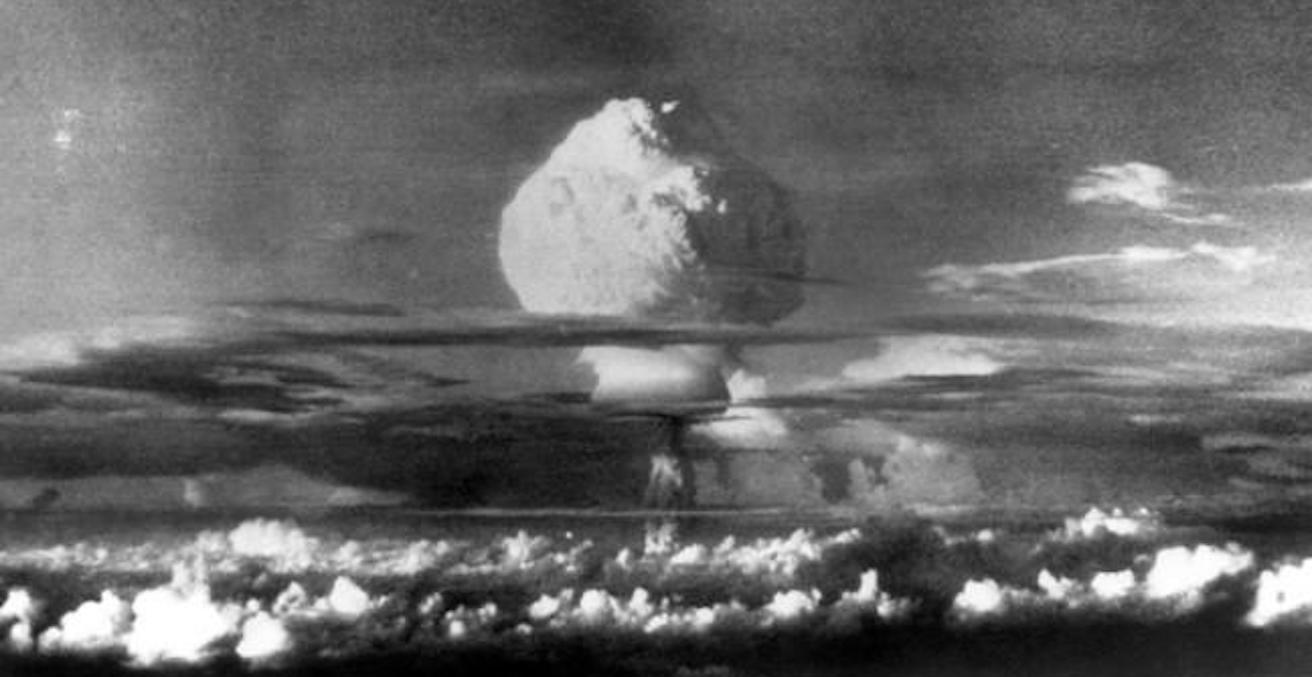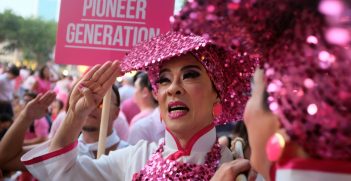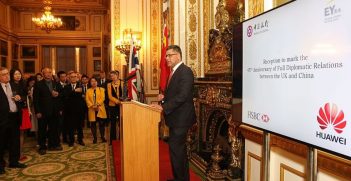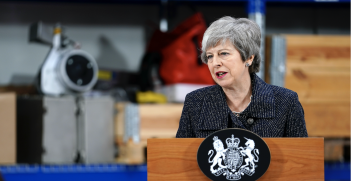The Commonwealth Bomb

Sixty years ago this week, the British government tested a hydrogen bomb in the Pacific that still has resounding health and environmental effects today. If the current UK government wishes to show its benevolence, addressing these past actions would be a good start.
Following the April 2018 Commonwealth Heads of Government Meeting (CHOGM) in London, the United Kingdom (UK) government announced it will increase aid to the South Pacific and open new diplomatic missions in the island nations of Vanuatu, Tonga and Samoa. CHOGM followed a visit to Vanuatu by Prince Charles, designed to bolster the Commonwealth’s reputation in Pacific countries at a time of growing Chinese influence. At CHOGM, UK foreign minister Boris Johnson said: “As a Commonwealth family of nations, it is in our shared interest to boost prosperity, tackle security issues and clear up the environment.”
But if the British government is serious about security and environment in the Pacific, it could start by addressing the health and environmental consequences of the UK nuclear testing program in the islands.
Sixty years ago, the British government exploded a 2.8 megaton thermonuclear weapon, codename Grapple Y, at Christmas (Kiritimati) Island in the central Pacific. This was one of nine atmospheric nuclear tests during Operation Grapple, the program to develop the British hydrogen bomb. These tests were held at Malden Island and Kiritimati in the British Gilbert and Ellice Islands Colony that are today part of the Pacific nation of Kiribati.
Operation Grapple participants—sailors and soldiers from the UK, New Zealand and Fiji who supported the British Empire in the 1950s—are seeking support from the UK government for ongoing health concerns. Many Grapple participants have suffered from cancer, leukaemia and other illnesses that can be caused by exposure to ionising radiation.
Britain began its atomic weapons program in Australia, with 12 atomic tests at Monte Bello, Emu Field and Maralinga in 1952-57. But the UK government decided to develop more powerful thermonuclear or hydrogen bombs, to maintain its post-war status at a time the British Empire was crumbling; with independence movements in Palestine, India, Cyprus, Malaya and beyond.
The United States conducted its first test of a hydrogen bomb in the Marshall Islands in 1952, followed by the massive “Bravo” test in March 1954. After hearing of this 15-megaton detonation—the largest ever by the United States—Sir Winston Churchill decided the UK must develop its own thermonuclear weapons. In a personal letter to United States President Dwight D. Eisenhower immediately after Bravo, Churchill recognised both the power of the hydrogen bomb and the hazards posed by fallout:
I am told that several million people would certainly be obliterated by four or five of the latest H-bombs. In a few more years, these could be delivered by rocket without even hazarding the life of a pilot. …Another ugly idea has been put in my head, namely, the dropping of an H-bomb in the sea to windward of the island or any other seaborne country in suitable weather, by rocket or air plane, or perhaps released by submarine. The explosion would generate an enormous radioactive cloud, many square miles in extent, which would drift over the land attacked and extinguish human life over very large areas.
Nearly 14,000 British troops travelled to the central Pacific for the UK H-bomb testing program, but this was truly a Commonwealth bomb, built with support from other Anglosphere leaders.
The atomic triggers for the H-Bomb were tested in South Australia in late 1957, as part of Operation Antler. Canada opened its airbases to allow the transfer of nuclear components from the UK to the central Pacific and the Chalk River reactor generated crucial nuclear materials. New Zealand sent aircraft and two naval frigates with 551 New Zealand sailors to support the tests. The British colony of Fiji supplied 276 Fijian participants from the Royal Fiji Military Force and the Fiji Royal Naval Volunteer Reserve. Dozens of Gilbertese islanders worked as labourers to support the military operation. Commonwealth countries like Samoa, Cook Islands, Kiribati, Fiji and Australia hosted radiation monitoring stations.
In the decades since the tests, successive British governments have argued that there was no significant danger to participants from radioactive fallout. However independent medical studies, such as research conducted by Professor Al Rowland at Massey University in New Zealand, have documented significant chromosomal translocations amongst the New Zealand sailors who joined the naval task force for Operation Grapple.
This evidence of genetic damage raises concern about possible intergenerational effects for the children and grandchildren of participants. Survivors on Kiritimati Island have formed the Association of Cancer Patients Affected by the British and American Bomb Tests.
Cold War nuclear testing in the Pacific by the United States, France and Britain has left political as well as environmental legacies. New Zealand, Vanuatu and other states have declared their territory nuclear free and today, people right across the region call for the abolition of nuclear weapons. Many Commonwealth governments in our region—New Zealand, Vanuatu, Kiribati, Tuvalu, Fiji, Samoa and more—have signed the new United Nations Treaty on the Prohibition of Nuclear Weapons (in contrast, the Turnbull government boycotted the negotiation of the Treaty and has refused to sign it). This treaty has important provisions that oblige countries to support environmental remediation and assistance for the victims of the use and testing of nuclear weapons.
The ageing UK, New Zealand and Fijian soldiers and sailors who served in Operation Grapple have called on Prime Minister Theresa May for urgent action. They ask the British government to provide compensation, medical support and environmental rehabilitation to all people affected by Operation Grapple. They seek funding for an independent medical study to investigate potential intergenerational health effects for the children and grandchildren of participants from New Zealand, Kiribati and Fiji.
If the Commonwealth truly wishes to show its value to the people of the Pacific, a first step would be to clean up the nuclear legacies of British colonialism.
Nic Maclellan is author of “Grappling with the Bomb” (ANU Press, 2017, a history of British nuclear testing in the Pacific. This article is based on his address to the AIIA VIC on 17 April 2018.
This article is published under a Creative Commons Licence, and may be republished with attribution.





